As part of our Biology and Life Sciences theme, we studied seeds, plants, and flowers.
Question of the Week: What 4 things does a plant need in order to grow?
Hands-On Science Activities
Terrarium
Our Engineering project of the week was to build a small environment/terrarium for growing plants. Use clear plastic bottles such as 2 liter soda bottles or large juice jugs. Cut them in half. Turn the top half upside down and nest it in the bottom half as shown below. Then put in layers of rocks, horticultural charcoal (to prevent mold), soil, then small plants. The take-home instructions (put it in a sunny spot, water it every few days) gives us the opportunity to talk to kids about what plants need to grow.
Seed Bombs
Prep: Take construction paper – shred it with your hands (if you cut it with scissors, those smooth edges won’t work as well at absorbing water and later bonding back together). Pour hot water over it and soak for 15 – 20 minutes, then whir it in a blender or food processor till it’s pulp. Squeeze out some of the water (you want it about as wet as applesauce.) Note – this can damage blenders, so be careful!!
In class: Have the child take a small handful of pulp – push some seeds deep inside it. (Note: medium sized seeds work best. Itty bitty seeds like chamomile are hard to see and easy to drop. Big seeds like squash and pumpkin are hard to fit inside the bombs.) Squeeze out most of the extra water, making a ball. Optional: press it into a mold to make the desired shape. Then put in a plastic baggie to take home. At home, you can plant right away, or take it out of the plastic baggie to dry, and then use it later. Can plant in your yard, or a planter, or chuck it over a fence into a vacant lot to add some pretty flowers to the weeds growing there. Learn more about a similar project at Twig & Toadstool.
Bean Seed Projects
The night before class, we wrapped our dry lima beans in a wet paper towel to soften up the surface before planting.
Plant a Bean
Children fill a dixie cup with soil, poke a finger in to make a hole, push a seed into the hole, cover it up with dirt, and spray on a little water. (You could use eggshells left over from Eggs class instead of dixie cups…)
Germinate a Bean
Children folded a paper towel, sprayed it till it was wet, put it inside a ziplock, and added one bean seed.
Take Home Instructions
We told them that plants need soil, air, sun and water to grow. We told them that they should take their bean seeds home, and tape the baggie up in a window and put the cup on the window sill so they both get plenty of sun. Every few days they should water the seed in the cup, and if the paper towel has dried out, they should add water to the bag.
We showed kids a picture of how beans seed develop, pointing out that they develop under the ground, and at first it’s hard to see them growing. We said they would be able to see the seed in the plastic bag sprout and start to grow, and they will know that the other seed is growing under the soil. We tell them that when the bean seed in the cup pokes up a seedling above the ground, the seed in the bag will likely have roots. They will need to transfer the seed from the plastic bag to dirt. It started to grow in the bag with just water and sun. But to get bigger it needs soil and fresh air.
How does a Plant Grow
Sequencing
We printed these sequencing cards so the kids could put in order the steps from a bean beginning to sprout and getting bigger and growing roots. We also printed a few examples of diagrams that show how a plant grows from seed to mature plant.
Observation: Display of Plant Growth
Starting a few weeks before this class, we plant grass seeds and other seeds in a plastic egg carton. Each day, we start a new batch. We then label how long they’ve been growing, so kids can see that you don’t see anything at all above ground in the early days, then the sprouts start to appear. We put this display out on a table to look at with magnifying glasses, plus during circle time, they were used to illustrate places in the book where it talked about plant sprouts starting to emerge from the ground.
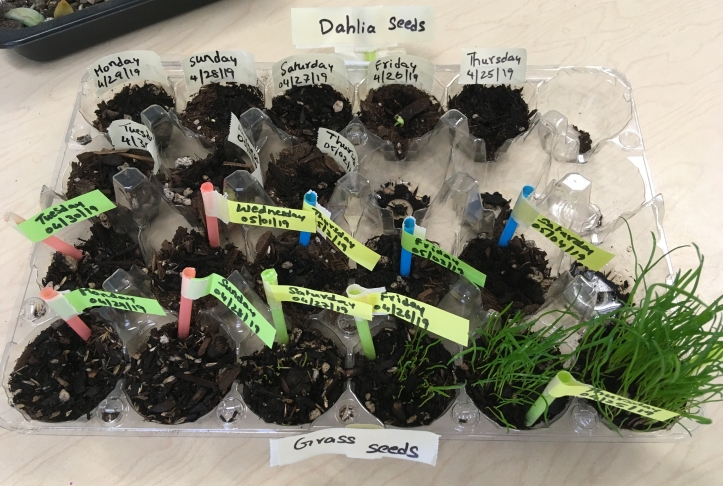
If you’re not planning two weeks in advance, and need a last-minute illustration of this idea: I went online and found pictures of a plant at one day, two days, and so on up to day 20, and compiled a poster of how plants grow day by day. Upside: it’s a great depiction of plant growth over time. Downside: the only plant I was able to find these type of photos of was cannabis. It’s illegal in many states, so it’s not the ideal plant to show pictures of! (Kids won’t know or care, but I did put a little disclaimer on the poster for parents, to explain why I had pictures of pot plants.)
Another option is to have a class project one day where the kids have a bin full of soil, grass seeds, and “rakes” so kids could plant the seed. You water it for the next few weeks and you get a tub full of grass.
have a bin full of soil, grass seeds, and “rakes” so kids could plant the seed. You water it for the next few weeks and you get a tub full of grass.
Science observation – Wicking
To show wicking / capillary action – how plants pull water up through a stem, you can use celery, carnations and cabbage leaves. The day before class, place these in colored water. By five hours later they’ll have good color (first photo). Even better by class time, 15 hours later (second photo) and at 25 hours. (Click on photo for bigger image)
I also made a poster to show the progress over time. Read more about these types of experiments at TinkerLab, Outlaw Mom, and PBS.
Plant Parts Puzzle
Make a puzzle with a picture of a flower with leaves, stem, and roots – cut into four puzzle pieces for kids to assemble. There’s one at L is for Learning. Here’s the PDF we designed last year, and a photo of it (on the left) – this one is better for preschool age kids. And, here’s the free printable PDF for this year’s version, and a photo of it. (on the right) This one is better for kids kindergarten through second grade or so.
How Seeds Travel
The book Flip, Float, Fly has great illustrations of all the ways that plant seeds travel. We took photos and printed posters of these pages to put on the wall. We used these for a display and a large motor game. (See circle time.)
Art Process and Craft Projects
Celery Rose Prints
Cut the base off a stalk of celery. Use it and paint to make prints. You can also use cut bell peppers and other fruits and veggies for interesting prints.
Water bottle flower prints
Use plastic water bottles, soda bottles, and juice bottles (use a variety of brands) to make flower prints. Just paint a thin layer of paint on the bottom of the bottle, and print. Later, after the paint has dried, you could add paint or paper stems or leaves.

Paint with Flowers
At the easel, instead of brushes, children used carnation flowers and stems to paint with.
Cupcake Paper Flower
On a piece of paper, we glued strips of green paper to be stems, and paper leaves. At the top of the stems, we glued flattened out cupcake papers, then glued seeds into the center of the papers. The kids’ results were similar to the first photo, which is from pre-kpages.com. They can look as good as our teacher’s sample…
Flower Bookmark: Take a popsicle stick. Color it. Tape yarn fringe on one end to be roots and tape paper flower on the other end.
Other Activities
Science Skills: Bean Sort
Put a bowl of beans and/or seeds out with several empty containers. Kids sort beans/seeds by type, then can count how many of each, compare which they have the most of / least of and so on. They can also learn vocabulary by learning the names of each bean. I got a 15 bean soup mix, and really a 6 or 7 bean combination might be more appropriate at this age. (Some kids will only do this for a moment, but sometimes I come back at the end of class, and discover that one dedicated child sorted ALL the beans!
Sensory Table
Fill it with something that looks like dirt: One year, we used cloud dough (flour, oil and cocoa powder). We’ve also used potting soil. Our current go-to is Coconut Coir Fiber. (Click on that link to learn more.)
Add gardening tools (trowels, rakes) and plastic plants and/or bugs. Could also add lima beans or another big seed that would be easy to sift out of it later.
Water Table: Watering cans to pour with plus spray bottles. We also threw in some clear glass stones, which look like odd bubbles in the water till you touch them and discover they’re solid. We also put in silk flowers.
Imaginary Play: We had big mats covered in brown fabric to be a gardening plot. (Or, this year we had a brown rug.) We put out gardening gloves, hats, gardening tools, plant pots, fake flowers, and bug puppets.
We also marked out a tic tac toe board on the mats, and had crocheted fruits and veggies plus the bug puppets so they could play plants vs. bugs tic tac toe.
Motor Play: The other class we share our space with happened to have a fishing pond activity where kids could use fishing poles (dowels with magnets tied on) to fish for paper flowers with paper clips attached.
Other projects to consider:
- You could make tissue paper flowers with pipe cleaner stems. Just search Pinterest for a hundred examples.
- Make a collage with seeds.
- Make a musical shaker by filling a small container with beans or seeds.
- Dissect a flower. Learn more at Gift of Curiosity or Montessori in Bloom.
- Dissect fruits. You could work together to dissect a variety of fruits so they can see the range of seeds – cut open an avocado, peach, or cherry to show the one big pit. Cut open an apple or citrus fruit to see a few seeds distributed in a fruit. Cut open bell peppers or pomegranates for LOTS of seeds, and display how a strawberry keeps its seeds on the outside. This is a fun snack-time activity. You could also practice prediction (a key science skill): First guess how many seeds will be inside, then cut it open and count seeds.
- For snack, make dirt cups: chocolate pudding, oreo crumbs, gummy worms…
Opening Circle:
Intro: We asked them to name some plants they can think of. Write them on the board, sorting into several columns. Then label the categories like vegetable, fruit, tree, flower…
Rhythm Game: We often begin circle with a clapping game – it helps get all the kids sitting down, paying attention and in the rhythm. (Rhythm is also great for brain development and future math skills.)
Play 1-2-3-plant. Ask a child to suggest a plant (e.g. tulip), and then you clap a rhythm, where you say 1-2-3-tulip, then point at the next kid for an idea, then clap 1-2-3-daffodil. And so on. (You can give the hint that they could say any of the plants we just talked about.) OR
4-3 rhythm. Have them say watermelon. Clap the syllables. Count the syllables as you clap. Then do the same with dandelion. Then huckleberry. Then do black-eyed pea… huh… that’s only three syllables. Then try pumpkin seed. Then blackberry. Then do a 4-3 pattern, saying/clapping watermelon, black eyed pea. Then clap a 4-3 pattern without saying those words out loud.
The Big Idea: We drew a picture of a flower growing (with roots) on the board. We asked kids what plants need to grow, and wrote the answers on the board as they came up with them: Sun, Water / Rain, Dirt / Soil, and Air. We talked about what animals and humans need (a review of idea from our Habitats and Adaptations classes) and how that’s similar and different.
Song: We taught a simple song, to the tune of Row Your Boat:
Grow, grow, grow your plants
Grow them tall and green
Soil and water, sun and air
All seeds depend on these
An alternative would be this, inspired by Preschool Education.
Dig, dig, dig the earth
Then you plant your seeds
A gentle rain and bright sunshine
Is all that they will need
Book: Last year, we read Two Old Potatoes and Me by Coy. A boy finds two old potatoes with sprouting eyes at his dad’s house. He is about to throw them away, but his dad suggests they plant them. They cut them into pieces, plant them, water them, and wait… eventually ending up with over 60 potatoes. Great story about growing process and patience. This year, our library no longer had the book, so we chose other options (see below).
Closing Circle
Song: the Garden Song. (Here’s a video with John Denver and the Muppets. You can also find versions by Pete Seeger; Arlo Guthrie; Peter, Paul and Mary; and my favorite recording by Priscilla Herdman – which accompanies lots of other lovely songs on her album Daydreamer“>Daydreamer. There are also books featuring the words of the song and illustrations, such as Inch by Inch: The Garden Song with illustrations by Eitan.)
Inch by inch, row by row
I’m gonna make this garden grow
All it takes is a rake and hoe and piece of fertile ground.
Inch by inch, row by row
Gonna help these seeds I sow
Soil will warm them from below
Till the rain comes tumbling down
Book: We read If You Hold a Seed by MacKay. This is a beautiful quiet story where a boy makes a wish, plants a seed, and then we see the seasons and years pass by until the tree and the boy are fully grown. And then the man takes his son to the tree and they plant a new seed. Just a gentle way to examine life’s seasons.
Another nice option for closing circle would be the Garden from Frog and Toad Are Friends by Lobel. Frog gives Toad a few seeds to plant. Toad wants them to grow RIGHT NOW!! A nice story for kids to empathize with, and laugh at, about the frustration of waiting for something. (See videos below, and check out this post about using this story to Teach Children Philosophy.)
Big Motor Activity – How Seeds Travel. We read the last page of Flip, Float, Fly book. Then I pointed out the pages I had printed, read them, and ask kids to act out each seed. Maple seeds twirl. Tumble weeds tumble. Coconuts float on the ocean. Touch me nots explode and fling their seeds. Bats eat figs and fly away. Squirrels hide acorns and forget about them. Locust tree pods skitter along the ice. This was a really fun ending to class, especially if you end with “Burdock seeds cling to people…. so cling to your parent as they leave the room!”
More recommended Books (contain affiliate links or check your local library)
- One Bean
by Rockwell. This would be a FABULOUS book to accompany a class project where you plant lima beans and take them home because it’s the story of a boy doing just that, and each of the steps in its development, from planting the seed to harvesting the beans. I might not read it if I wasn’t planting beans because kids might be disappointed they didn’t get to try it. Ages 3 – 6.
- The Surprise Garden
by Hall and Halpern. Tells the story of children planting a garden. Their mother has given them a variety of seeds that they look at, then dig the dirt, plant the seeds, water, and wait for them to grow. They’re excited to see peas, beans, squash, and more start to reveal themselves. All summer long, they pick and eat their produce. At the end, there’s a summary of the seeds they planted and what grew from them. Fun illustrations. Nice simple read-aloud. Age 3 – 6. (Note, if you read this book, you could also do a project of planting a variety of “surprise seeds” in a bin, then watching them grow over the next several weeks to see what all comes up. I personally am not up to moving this out doors and seeing it through to plants you can harvest, but at least we could start the process.)
- The Carrot Seed by Krauss and Johnson. This 60 year old classic tells a story of a boy who plants a seed and has high hopes (that others don’t share) that it will grow to something wonderful.
- Jack’s Garden
by Cole. This is a cumulative story. The first page says “This is the garden that Jack planted.” Then on each page, it adds a new sentence and repeats what has come before, so by the end it’s “These are the birds that chased the insects that sipped nectar fro the flowers that blossomed from the buds that formed on the plants that grew from the seedlings that sprouted with the rain that wet the seeds that fell on the soil that made up the garden that Jack planted.” Full of detailed naturalistic drawings of birds, eggs, insects, plants, and gardening tools. If you prefer a more serious, less silly book, this is a nice one.
- Muncha! Muncha! Muncha!
by Fleming and Karas. On the other hand, if you prefer silly – this is a good one. It’s the story of Mr. McGreely who finally plants the vegetable garden he has long dreamed of, but the bunnies keep appearing and “muncha muncha” – there go the plants. Mr. McGreely builds a small fence, then a big fence, then a moat, then stone fortifications… and still… muncha muncha…
- A Fruit Is a Suitcase for Seeds by Richards. Nicely illustrated book for kids age 4 – 7, which talks about a really nice metaphor: “many seeds travel inside fruits. The fruit is like a suitcase for seeds. It protects them on their trip. Fruits look beautiful and taste good, so animals and people eat them and drop the seeds in different places.” It illustrates fruits with pits, some small seeds, many tiny seeds inside, and seeds on the outside. This would be a great companion to the fruit dissection project.
- From Seed to Plant
by Gibbons. I can’t count how many Gail Gibbons books we’ve checked out for class this year! And they’re always good non-fiction books – nice illustrations, good writing, clear explanations of scientific ideas. I can’t say I ever fall in loved with one, and we don’t read them aloud at circle, but absolutely worth having on the bookshelf for kids who want to learn more! Best for 5 – 7 year olds.
- The Curious Garden
by Brown. A nice story of urban transformation… what if in a dreary city with no greenery of any kind, a curious boy went walking on an abandoned elevated railroad track and found wildflowers and plants? What if he tended a garden there? What if new gardeners popped up all over town? Nice read-aloud for 4 – 7, but may be a little wordy for 3 – 4 year olds.
- What’s in the Garden?
by Berkes and Arbo. A page offers a rhyming riddle: “The part that you eat is way in the ground, so how can this fabulous food be found? Look for the feathery leaves on its top. It’s long and it’s orange – a real healthy crop.” The illustration shows the plant and an insect or bird. Kids guess what the plant is, and on the next page, there’s a recipe for something using that plant: blueberry pie, tomato sauce, French onion soup… At the back of the book, there’s adult-level info on each of the fruits and veggies, a discussion of what plants need to grow, plant anatomy, a glossary of cooking terms, and useful websites. Best for kids age 6 – 8. Best if used in conjunction with a gardening project or a trip to a farm.
- A Seed Is Sleepy
by Aston and Long – the author and illustrator of The Egg is Quiet we had for our Eggs theme. A book that can be read aloud at different depths… you could just read the big words on each page (A seed is secretive). Or you can add the note that ties to that (It does not reveal itself too quickly). Or, there’s the full details (Most seeds sleep through a season of two, waiting for the warmer temperatures of spring. But some take their time. Ten years might pass before the bright red-orange seed of the Texas mountain laurel shows its purple blooms.) Each page has very detailed, beautiful, naturalistic paintings. I honestly don’t read these aloud – I put them out at an observation station… next to eggs and magnifying glasses, or next to some growing plants to encourage the child to look deeply at both the book and the items.
- The Dandelion Seed’s Big Dream by Anthony and Arbo. Nice illustrations, nice story of a dandelion seed’s journey. My 5 year old liked it for the story and got engaged by the challenges the seed had on its way to finding a home. My co-teacher wasn’t a fan of the anthropomorphized seed: “still it held onto its dream of becoming a flower like its parents and their parents before.”
- Growing Vegetable Soup by Ehlert.
If you want a good basic book for 3 – 4 year olds about the process of growing a seed, and what it needs to grow, this is great. Too simple for older kids.
- The Tiny Seed by Carle.
About seeds being blown across the world. The tiny seed is lucky not to land on the icy mountain, or in the ocean, or the desert or get eaten by a bird or a mouse or get picked before it produces seeds of its own. Nice story, but this is one where I wonder how one seed traveled so very far through so many climates… kids won’t wonder that, but I do.
Pick, Pull, Snap!: Where Once a Flower Bloomedby Schaefer and George. I love the illustrations. Love the fold out flaps. The words are not as engaging for young children as I wish they were. “In the field, wind waves golden tassels high above heads, and pollen floats through the air to the silks of a flower.” It’s good to have on the shelf, but I don’t read aloud at circle.
- Flip, Float, Fly!: Seeds on the Move
by Macken and Paparone. Nice illustrations and nice text talking about all the ways seeds move through the world: maple seeds fly like shiny green helicopters, tumbleweeds scatter their seeds as they roll, roll, roll; locust tree pods skitter and skate on slippery ice. If we had more time in circle or discussed seeds in more detail, this would be a great read-aloud.
- How a Seed Grows by Jordan and Krupinski. Ages 5 – 7. Offers a basic introduction to seeds and how they grow, then the majority of the book is a detailed description of project where you plant bean seeds in eggshells, care for them over the weeks, then transfer them to the garden and care for them till they yield beans. If you want to do the project described in this book, it’s a great book! If you don’t want to do it, I wouldn’t get the book – I find that if I get a project-based book and then don’t do the project, it just makes my kid cranky at me.
Another good book is Planting a Rainbow
by Ehlert. We read it during Rainbow week.
Videos
- I LOVE the story of the garden from the book Frog and Toad are Friends. Check out this video – sure to please any five year old: https://www.youtube.com/watch?v=j-4FxBAbKd8
- If you can find Watermelon Magic, it’s great!
- There’s lots of great videos on YouTube of timelapse photography of plants growing. But if you watch them, you’ll need to explain timelapse to your child and explain plants don’t really grow that fast.
- I’m sure there are plenty more great stories of characters planting seeds and having a hard time being patient waiting for them to grow, then enjoying the harvest. If you have a favorite, let me know in the comments!











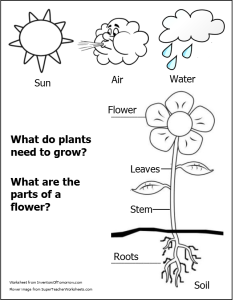





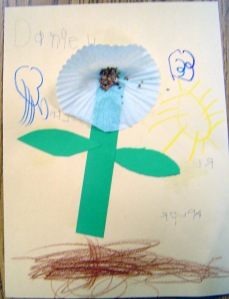








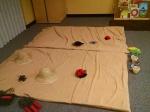



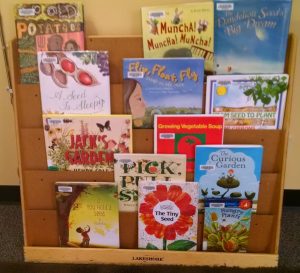
[…] Seeds and Plants […]
LikeLike
[…] Theme – Seeds and Plants […]
LikeLike
[…] Kids’ Songs about Sc… on Seeds and Plants […]
LikeLike
[…] Biology: Skeletons; Habitats, Adaptations, Eggs, Seeds and Plants […]
LikeLike
[…] Biology: Skeletons; Habitats, Adaptations, Eggs, Seeds and Plants […]
LikeLike
[…] Seeds, Flowers and Plants. Sunflower seeds, pumpkin seeds, peas, edamame / soybeans. Or fruit with obvious seeds (cherries, seeded watermelon, peach, etc.). American cheese slices, and flower shaped cookie cutters. Something flavored with lavender or rosewater (though many kids don’t like these flavors). […]
LikeLike
[…] sand, and black beans and rice before. This year we used coconut coir fiber. Learn about it in our Seeds and Plants post.) Kids would unbury the bugs, then sort them into three dishes: insect – 6 legs, […]
LikeLike
[…] in it, so we’ve instead started to use coconut coir bricks – learn about them in our seeds and plants […]
LikeLike
[…] Plant seeds. Any seed, any time. You can germinate the seed in a ziplock baggie so you can see it sprout, then make a planter from a water bottle. […]
LikeLike
[…] Bin. Fill a bin with something to represent dirt: could be potting soil, or black beans, or coconut coir fiber, or cocoa cloud dough. Give the child fake flowers to plant, trowels, and […]
LikeLike
[…] in the bottom for drainage, set it on its lid before putting it in the window. Or you could make a terrarium from a 2 liter […]
LikeLike
[…] oatmeal, black beans and rice before. This year we used coconut coir fiber. Learn about it in our Seeds and Plants post.) Kids un-bury the bugs, then sort them into three dishes: insect – 6 legs, arachnid […]
LikeLike
[…] in the bottom for drainage, set it on its lid before putting it in the window. Or you could make a terrarium from a 2 liter […]
LikeLike
[…] the structures of plants and animals. Learn how they use those parts to help them survive in their […]
LikeLike
[…] the Garden Song, which is quite good. (I use it in my kids’ science class when we talk about plants.) I thought long and hard about Dancing Feet by Lindsey Craig and Mark Brown (video) which would be […]
LikeLike